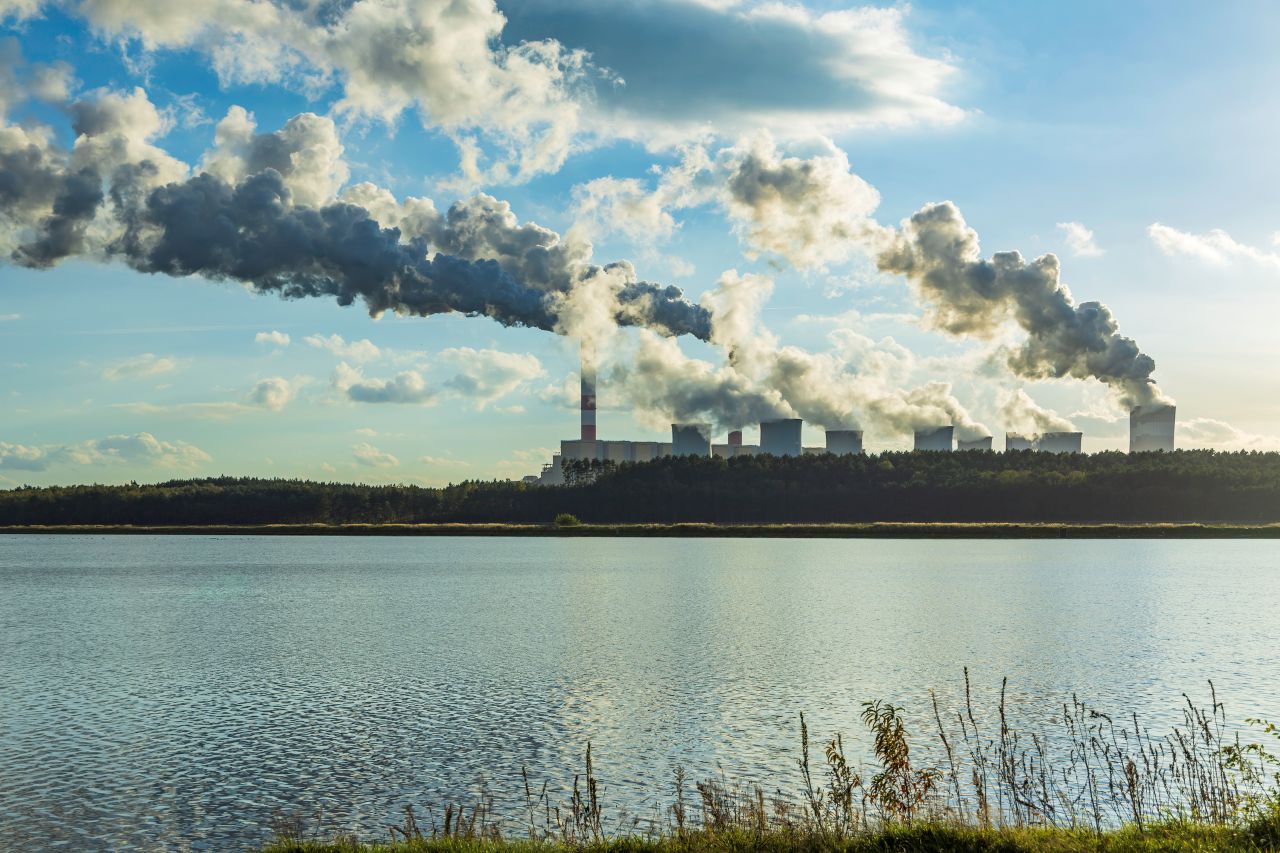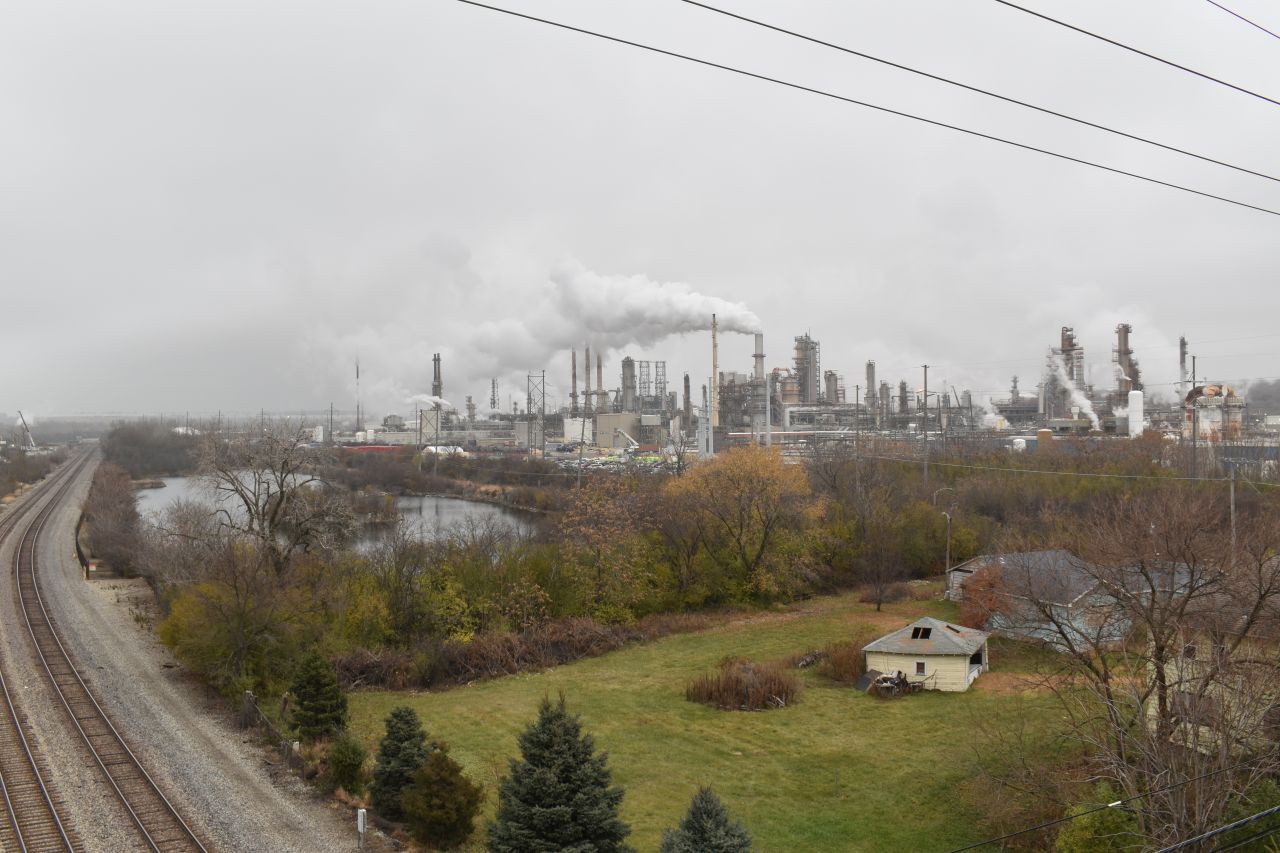Oil & gas companies and investors placing big bets on federally-subsidized carbon capture projects

The world’s largest energy financiers – including oil and gas majors like ExxonMobil and Chevron, the federal government and private equity firms – are investing billions of dollars in technology intended to reduce emissions of carbon dioxide, the most significant greenhouse gas contributing to a rapidly warming climate.
Many supporters of carbon capture and storage see the technology as a path to lessen the climate impact of major industries and to offset the carbon dioxide (CO2) emissions from major companies whose shareholders are pushing them towards carbon neutrality. These carbon capture projects include proposals to divert CO2 produced in biofuel plants, ammonia and hydrogen production centers, power plants, natural gas processing plants, cement kilns, and steel mills.
Data from the International Energy Agency show 190 large scale carbon capture, utilization, and storage projects in the U.S. The database only includes projects that can capture more than 100,000 tons of carbon dioxide per year from the smokestacks of industry (or 1,000 tons for direct air capture projects that suck CO2 out of ambient air).
But it remains unclear how many of these projects will become a reality or how many of the projects that are built will actually work.
Of the 190 projects in the queue, only 21 are currently operating, with another three suspended or taken out of service. Another seven are under construction, with the remaining 158 projects still in an early planning phase.
“A year ago it seemed like every other day there was an announcement in the [carbon capture, utilization, and storage] space, said Okwudiri Onyedum, treasurer at ExxonMobil’s low carbon solutions division, said in a panel discussion hosted by the Global Carbon Capture and Storage Institute. “It was hard to tease out what was a real project, what’s actually going to make it to commercial operation. … Now it feels almost like the pace has slowed down but the actual quality of projects of those projects and those announcements has gone up tremendously.”
Many of these projects hinge on a massive federal tax credits for carbon capture, an IRS program known as “45Q,” enacted in 2008 under the Bush Administration. The Inflation Reduction Act, passed in August 2022, increased that credit from $50 per metric ton to $85 per metric ton of CO2 captured from a specific point, such as an industry smokestack, and $150 per metric ton for CO2 captured directly from the air. Once approved, the tax credits last for up to 12 years.
These tax credits have been a strong driver of the wave of new CO2 capture projects planned across the U.S.
Michael Brownlie, division director at Australian investment firm Macquarie, said in the global carbon capture panel that it remains difficult for investors to prioritize projects with a payback period longer than 12 years.
“It’s very hard to look beyond that,” Brownlie said. “So we’re looking for projects that fundamentally get repaid during that time period.”
These tax credits are anticipated to cost taxpayers $2.3 billion from 2020 through 2029. However, CO2 capture and storage technology remains largely unproven at the large scale planned by the industry and its financiers. Researchers have also cast doubt on the verification methods used to ensure that carbon capture projects are fulfilling promises made when seeking to qualify for the tax credits.
One 2020 incident also illustrates the risks that some carbon capture projects can pose to nearby communities. That February, a Denbury CO2 pipeline in Satartia, Mississippi, ruptured, causing an invisible cloud of the gas to move through the community, displacing breathable air and leaving people unconscious and unable to breathe. At least 45 people were hospitalized and more than 200 evacuated.
The incident did not stop oil giant ExxonMobil from agreeing to purchase Denbury, the company that built the pipeline. In July, Exxon announced it would pay $4.9 billion to buy the company in a deal expected to be finalized late this year. Denbury operates more than 1,300 miles of CO2 pipelines and injects CO2 into the ground to help force oil out of older wells in Louisiana, Texas, Mississippi, Wyoming, North Dakota, and Montana.
This technique, which the industry calls “enhanced oil recovery,” involves injecting liquid CO2 into wells in established oil fields. The goal is to displace the underground oil and force it closer to the surface. Most of the CO2 that industry captures is currently used for this “enhanced recovery” to produce more oil, according to Department of Energy.
Exxon is far from the only major oil and gas company investing in CO2 capture. Chevron, the second-largest oil giant headquartered in the U.S., has for years operated CO2 pipelines and is planning a project in Kern County, California, that would capture up to 300,000 metric tons of CO2 per year and store it in underground geologic formations. Chevron also operates a massive CO2 storage project in Western Australia tied to its liquified natural gas operations there.
Some companies are interested in projects that would draw CO2 directly from the air and sequester it underground. The idea is to then sell the CO2 for enhanced oil recovery or industrial uses. Companies can also sell carbon credits to other businesses looking to offset their emissions.
Occidental Petroleum, a Houston-based oil and gas company and chemical manufacturer, is investing in a direct capture project on 106,000 acres on the sprawling King Ranch in South Texas. It claims it could remove up to 30 million metric tons per year of CO2 from the atmosphere. Last month, Amazon announced a deal with Occidental subsidiary 1PointFive to pay for the removal of 250,000 metric tons of CO2 to be stored under King Ranch.
A handful of CO2 projects have been active for more than a decade. Since 2013, an Air Products project at a Valero oil refinery in Port Arthur, Texas, has captured CO2 from two hydrogen plants at the refinery. That CO2 is also injected underground to produce more oil. Air Products is also planning what it calls the “world’s largest blue hydrogen production facility” in Louisiana. The plan involves capturing at least five million metric tons per year of CO2 and storing it in geologic formations under Louisiana. The project is expected to begin operations in 2026.
Marathon Petroleum has been capturing carbon at some of its facilities, including its refinery in Los Angeles, its Catcher Ranch, Oklahoma, gas plant, and ethanol plants in Michigan, Ohio, and Iowa. The company says it captured 478,000 metric tons of CO2 in 2021 for use in the food and beverage industry and to sell to other industries.
The interest in carbon capture extends well beyond the oil and gas industry. For example, Archer-Daniels-Midland, a food company, was the first in the country to be authorized by the U.S. Environmental Protection Agency to operate an underground CO2 storage well. Its project in Decatur, Illinois, has been storing CO2 produced at a nearby ethanol plant since November 2011. Steel producers and cement companies are also eyeing the technology, with five projects planned at sites in Indiana, Texas, Missouri, and Colorado, according to International Energy Agency data.
Carbon capture is also a central component of many of the regional hydrogen production and distribution centers under consideration for $8 billion in funding via the 2021 Bipartisan Infrastructure Law. Some of these sites would synthesize hydrogen from natural gas, capturing and storing the carbon dioxide made in the process. Hydrogen fuel would then be moved from these "hubs" via pipelines and stored in tanks and underground caverns. Then the hydrogen would be burned or fed into energy-producing fuel cells to power industrial sites or move heavy trucks. Natural gas producer EQT, for example, has joined with other energy companies, nonprofit research and development firm Battelle, and the State of West Virginia to propose an Appalachian hydrogen hub that would produce hydrogen from natural gas and store the resulting CO2.
Other companies are focused on regional hubs specifically for carbon capture, use, and storage, where power plants, chemical factories, and other major emitters would share common infrastructure. Marathon Petroleum, an Ohio-based oil producer and refiner, is part of at least three such carbon capture hub proposals in Houston, the Ohio-Pennsylvania-West Virginia tristate area, and St. Louis plus surrounding areas of western Illinois. ConocoPhillips is considering using 25,000 acres it controls in southeast Louisiana for a carbon capture hub along the Mississippi River corridor. The company says it is also negotiating with landowners in Texas and Louisiana for rights to store CO2 underground on their land, as well as with “large industrial customers” that would provide the CO2.
Many of these hubs are planned for communities that already have a long legacy of industrial pollution. Sarah Martik, executive director of the Pennsylvania-based Center for Coalfield Justice, spoke about this in a September panel on the environmental justice risks of a carbon capture buildout.
“This is already a lot for communities to deal with,” Martik said. “Adding another layer of infrastructure on top of that massive buildout is a huge ask for people who have already been asked to deal with so much.”
Energy companies and the federal government are far from the only sources of financing for these CO2 projects. Private equity firms are also looking to invest in the technology.
For example, several private investors have expressed interest in a project by a startup company Carbonvert to develop a massive CO2 sequestration project across 140,000 acres in Southeast Texas along with Chevron and Talos Energy.
Jan Sherman, chief development officer at carbon capture startup company Carbonvert, said in a panel discussion earlier this year: “We have private investors that are really hungry for these projects.”
So money is flowing into this new industry, including from billions in federal subsidies. But whether these projects will actually work to stop climate change is another question.
Lead photo: A cement factory that employs carbon capture technology. Photo by Astrid Westvang.















